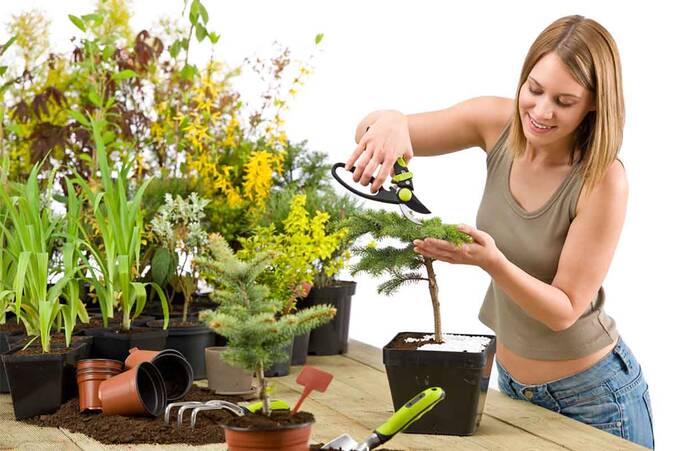Photograph: Shutterstock
Bonsai are meant to be kept outdoors. If the plant is ready, do not expect it to look like a miniature tree in a few weeks. It takes about a year or more for the plant to get set. Bonsai expert Ruppa Shah gives simple tips to maintain your bonsai.
- For bonsai the soil and pot size is limited unlike other plants whose roots go deep in search of nutrition. Hence use fertilizers to provide nutrients to your bonsai. A bonsai plant does everything that a regular plant does such as fruiting, flowering, so they must get nutrition. The required nutrition that a bonsai requires is NPK. This is the short form a mix that comprises nitrogen (N) which responsible for the size and amount of new growth and to some extent the green colour of the leaves; phosphorus (P) which is necessary for cell division and is associated with good root growth and flowering; and potassium (P) which activates cell enzymes and is related to the overall healthy cell activity.
- Remember to always water your plant before fertilizing it. Once the fertilizer bottle is empty, try a new fertilizer.
- Pruning is very important as this helps keep the plant in shape. No criss-cross branches should be there; give a proper shape to the canopy. Use a small pruning tool to strategically clip off leaves, buds and parts of branches to help the tree grow in a certain way. Each time you prune, growth is stimulated on another part of the tree. Knowing where and how often to prune a bonsai is part of the art of bonsai and learning how to do it takes a lot of practice.
- The right time to water the bonsai is morning time as photosynthesis begins during this time but look at the top soil especially during summer.
- Repot it after a few years. To check whether it is the right time to repot, upturn the plant gently and check whether the roots have spread and circle the main root system.
Styles of bonsaiThe best style for beginners to start is the Formal Upright style or the Informal Upright style. For beginners, choose ficus or maranta. Ficus has a wide range of species that adapts well to a bonsai. At a secondary stage, try the bougainvillea, tamarind, pine, peepal, jade, schifflera, adenium (flowering variety). Once you are an expert, try fruit trees like chickoo, mango and tangerines.
Cokkan: This is the formal upright form; think of a tree growing strong and straight with branches that stretch evenly around it.
Moyogi: This is the informal upright form; the tree has a more natural slant, rather than growing straight upward.
Other styles are slant, cascade, semi-cascade, windswept and saikei (a forest style created in a tray).






__1938613623.jpg)










